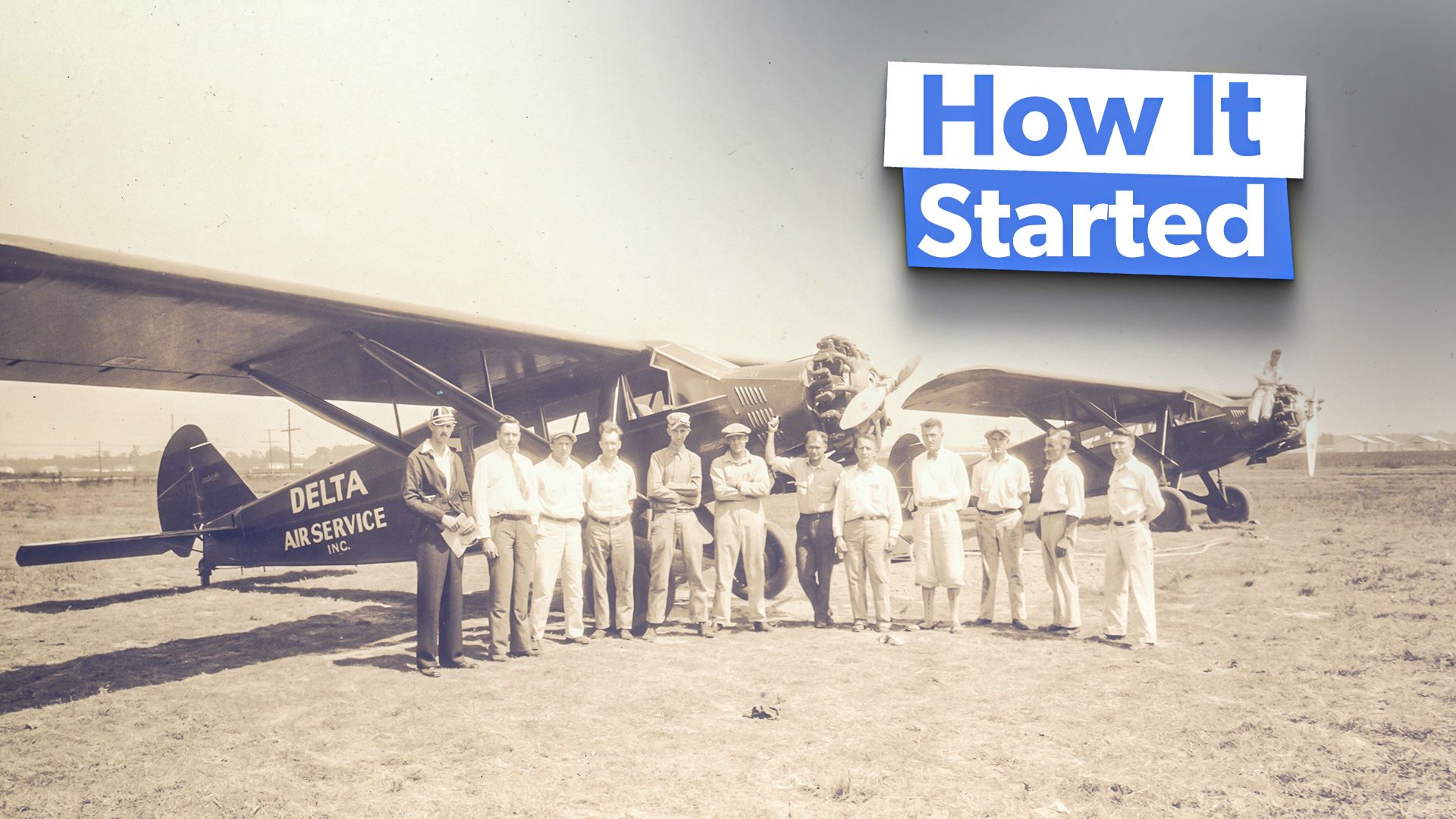Summary
- Delta Air Lines has roots in crop dusting & mail delivery before becoming a commercial airline
- The carrier pioneered new routes & collaborated with other airlines for growth
- Delta overcame financial challenges, mergers, & bankruptcy to become one of the world’s largest airlines
Delta Air Lines can trace its roots back to March 2, 1925, when the Ariel Crop dusting company Huff Daland Dusters was founded in Macon, Georgia. Later the same year, crop dusters general manager C.E. Woolman moved the entire operation to Monroe, Louisiana, after a boll weevil infestation devastated the South’s cotton-growing industry.
In the early 1920s, the United States Post Office began hiring privately owned planes and their owners to deliver mail nationwide. On February 2, 1925, Congress authorized the Postmaster General to invite bids from commercial aviation companies for lucrative mail routes. Huff Daland Dusters general manager C.E. Woolman knew the mail routes would be much more profitable than crop dusting and convinced local investors to buy the company. On December 3, a new company was formed called “Delta Air Service,” named after the Mississippi Delta, where the aviation company was based.
Delta Air Service begins operating passenger flights
The following summer, on June 17, 1929, Delta Air Service operated its first passenger flight from Dallas, Texas, to Jackson, Mississippi, with stops at Shreveport and Monroe, Louisiana. The aircraft used for the flight was a single-engine Travel Air S-6000-B, which had enough room for a pilot and five passengers. The 427-mile flight took five hours and included a 30-minute stop in Monroe for lunch.
Shortly after Delta’s first passenger flight, the company heard rumors that rivals planned to begin offering flights to Dallas from Atlanta, Georgia, and Birmingham, Alabama. Delta started to fly the new routes ahead of others to keep their advantage. I nitially, Delta operated three flights a week in each direction, with eastbound flights on Mondays, Wednesdays, and Fridays and westbound flights on Tuesdays, Thursdays, and Saturdays.
As Delta expanded westward, it began working with Dallas-based Southern Air Transport, which operated flights from Dallas to El Paso and then to Los Angeles.
Delta returns to crop dusting
As America entered the Great Depression in 1929, Delta knew that it needed to get a lucrative government mail contract to stay in business. Despite Delta being the first airline to fly from Atlanta to Dallas, the Post Office awarded the route to Southern Transcontinental, which would later become American Airlines.
After not winning the contract, Delta stopped air passenger flights and returned to crop dusting in October 1930. Delta did not know that then Postmaster General Walter Folger Brown had held a meeting with the nation’s largest airlines and effectively allowed them to divide the routes between themselves in what would later be known as the “spoils conference.”

Related
Throwback: The Story Of Delta Air Lines’ Royal Service
Take a step back in time as we explore the age of luxury.
After finding out what had happened, smaller air carriers that were left out complained to the government, which led to a Senate hearing and President Franklin D. Roosevelt canceling all mail contracts. The job of delivering mail was given to the Army Air Corps, but with them needing to gain experience in flying at night, it turned into a disaster.
After multiple crashes and the death of many pilots, the government had no choice but to hand back mail delivery to the airlines, but with several new conditions that prevented airlines that were awarded contracts at the spoils conference from bidding.
Delta gets a mail contract
Delta bid 24.8 cents per pound of mail and was awarded the contract to fly mail between Fort Worth, central Texas, and Charleston, South Carolina, on the Atlantic coast. Delta resumed its mail flights on July 4, 1934, using a three-engine, ten-passenger Stinson SM-6000. A month later, passenger flights resumed with the name “Delta Air Lines” painted on the plane’s fuselage.
As the airline continued to expand its routes to the north, in 1941, it moved its headquarters from Monroe, Louisiana, to Atlanta, Georgia, and four years later, it officially changed its name to Delta Air Lines. In 1946, Delta became the first airline to offer non-stop flights between Chicago and Miami. Continuing to grow while looking towards the future, in 1953, Delta Air Lines acquired Chicago and Southern Air Lines and began its first international flights to Caracas, Venezuela, and destinations in the Caribbean.
Delta Air Lines enters the jet age.
Now pioneering a hub-and-spoke network from Atlanta, in 1959, Delta entered the jet age after taking delivery of its first Douglas DC-8 and became the first airline to operate the Convair 880. By 1970, Delta had transitioned to becoming an all-jet airline. In 1978, Delta Air Lines flew one of its Lockheed l-1011 across the Atlantic Ocean non-stop for the first time between Atlanta and London.
Photo: Picryl
After Pan AM ceased operations on December 4, 1991, Delta Air Lines expanded massively after buying Pan Am’s East Coast and European routes. In 2000, Delta partnered with AeroMéxico, Air France, and Korean Air to form the SkyTeam global alliance. Despite its massive growth, Delta got into financial trouble in the mid-2000s and, on September 14, 2005, filed for Chapter 11 bankruptcy protection.
Meanwhile, Delta’s rival Northwest Airlines also filed for bankruptcy protection. Both airlines cut costs and laid off workers, allowing Delta to emerge from bankruptcy on April 25, 2007. A year later, in 2008, Delta and Northwest Airlines announced that they were merging to form what was at the time the world’s largest airline.
Today, Delta Air Lines has as many as 4,000 daily flights to 275 destinations in 50 countries. By fleet size, it is the world’s third-largest airline behind American Airlines and United Airlines and is the largest operator of Airbus aircraft in the United States.

Related
What Are Delta Air Lines’ Longest Routes With The Airbus A350?
Africa, Asia, and Oceania all make the list.





